Last updated: 09/03/21
The UK government’s roadmap out of lockdown (see link below) states that, from 19th March 2021, ‘Outdoor sports facilities such as tennis and basketball courts, and open-air swimming pools, will also be allowed to reopen, and people will be able to take part in formally organised outdoor sports.’
From this we take it that all Forest School programmes, that are not already able to run under the existing COVID rules, may restart from 29th March.
Last updated: Wednesday 06/01/21
We recognise that members must be feeling worried and worn out with the news of the third national lockdown (announced 04/01/21). The lockdown is the government’s attempt to prevent the rate of infection increasing exponentially, which is a seeming possibility as a result of the holidays, winter season and new COVID strain. Exponential growth would quickly overwhelm the NHS’s capacity to treat the population. We hope that the end of the winter season and roll out of the immunisation programme will allow things to improve in 2021.
The latest national lock-down should not affect Forest School activity in early years settings (which may remain open) or those of us who work with vulnerable/SEND/section 17 children and young people. In addition to these categories, schools and colleges are only open to the children of critical workers.
Those Forest School leaders who are continuing with their sessions should ensure that their Risk Benefit Assessments are robust and up to date.
Last updated: Tuesday 3rd November 2020
The FSA has collated government guidance, as of 4th July, relating to various outdoor education settings.
The FSA Perspective
The government has acknowledged that ‘the risk of transmission outdoors is significantly lower‘. They suggest that people ‘move activity outdoors if you can‘. The DfE ask educators to ‘consider which lessons or classroom activities could take place outdoors‘. They highlight the challenges of implementing protective measures in education settings. One action is to split classes in half, with no more than 15 pupils per small group (early years and primary).
Infection control remains as important as ever. So to our need to protect and shield the clinically vulnerable.
The FSA believes that, due to the nature of Forest School sessions and facilitating the play needs of children and young people, the most appropriate precaution that can be taken is to create and maintain learner ‘bubbles’. This means that equipment, resources and the environment can be shared within each ‘bubble’ without significant risk.
We note that children can be infected with CoV-2, and become ill with COVID-19. However, they appear to be less susceptible to infection than adults and their symptoms are generally milder. Early indications (from the W.H.O.) suggest that there is less transmission from children to adults.
The FSA has produced a new resource for members designed to help Forest School providers consider UK government guidance (relevant to England) and the actions that they may take to comply. This tool replaces the template risk/benefit assessment that we previously offered.
FSA members may access this tool at the bottom of this page.
Forest School leaders should produce Risk/Benefit assessments (RBA) that relate to the nCoronavirus epidemic. Your RBA should reflect YOUR circumstances and you must keep it up to date in these rapidly moving times. Risk to the Forest School leader, assistants, participants and wider society should be considered. For instance, those in vulnerable categories should be prevented from attending your sessions (older people and those with underlying health conditions).
We recommend that Forest School leaders read the guidance from DfE in full. In addition, it is important to note that each of the home nations has different guidelines. Moving forwards, it is likely that local rules and guidelines will be issued in response to flair-ups and clusters of COVID-19 cases. Forest School leaders should be mindful of these differences.
The FSA wants to help members explain the benefits of quality Forest School to decision-makers. To that end we have produced a 48 minute video in which our projects officer, Nic Harding, uses a PowerPoint presentation to explore the six core principals and how they align to create holistic development through Forest School provision.
The video is being made available to the public as a way to promote quality FS and the role of the FSA.
The PowerPoint presentation is available to FSA members as a tool to help them advocate for quality FS and their services (funders, clients, senior management teams).
Your RBA should reflect YOUR circumstances and you must keep it up to date in these rapidly moving times. Risk to the Forest School leader, assistants, participants and wider society should be considered. For instance, those in vulnerable categories should be prevented from attending your sessions (older people and those with underlying health conditions).
Forest School Association members may access the Forest School PowerPoint Presentation and the COVID-19 guidance tool below (updated 29/05/20).
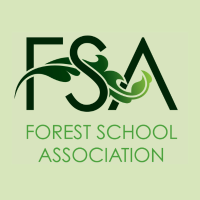
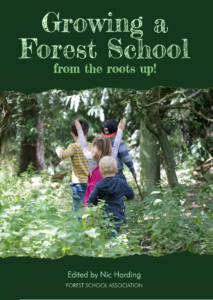
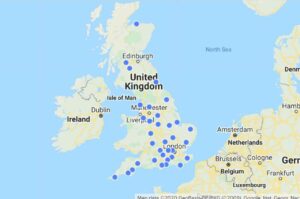
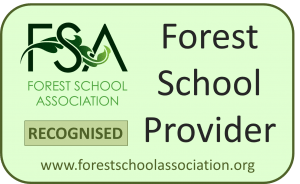
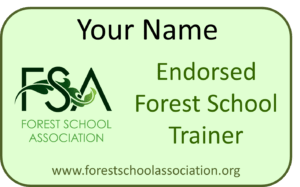
Hi everyone,
First time I’m commenting here so hope this works. I’ve recently set up some FS sessions for toddlers. Each child comes with their accompanying adult. As I understand it we’re allowed to run sessions with 15 participants according to gov’t guidelines, however does that include parents? I’ve been capping my numbers so far to keep it to 15 people (children and adults) but I’m now wondering if I’m able to open that up a bit more to say, 10 children plus their adult for example…?
Thanks!
Hello,
Can anyone advise on using ropes to make swings and then using during a session-a number of children would then be handling the same rope…
Thank you.
I am back in my school setting but sadly being used elsewhere in the school and not as my role as a FS Leader. We already have bubbles from each year group. We are in a deprived area and therefore provide and share waterproofs for the children. So, this is going to be my problem in September. I’m going to have to rethink how I run sessions and may not be able to provide quite so much for the younger years as their clothing is shared the most. I can’t keep washing the clothing and my head is already hurting as to how I’m going to manage just that aspect. According to some sites, I need 48 hrs before I can give the clothing to another child and I usually have Reception 4 mornings (8 groups of 8 across 2 weeks throughout the year) and other year groups as intervention on 4 afternoons a week. Is anyone else in this position and do you have any solutions? (Can’t ask parents to provide waterproofs due to being in a deprived area)
I work independently at one school with three age groups and in true primary school style I have the full class time because its PPA. Looking at the guidance, obviously the 15 bubble has gone but 3 different year groups over 2 days is more of a concern.
The school wants me back in September -I want to go – but they are using this clause as justification which seems reasonable but leaves certain questions about how we manage them. Any thoughts?
Supply teachers, peripatetic teachers and/or other temporary staff can move between schools. They should ensure they minimise contact and maintain as much distance as possible from other staff. Specialists, therapists, clinicians and other support staff for pupils with SEND should provide interventions as usual.
Having all this information available is great. As everyone, child and adult, are being told they can return to school/ work even if they are extremely or clinically vulnerable (as long as setting is Covid secure) does FSA still suggest that those that are extremely/ clinically vulnerable do not take part, staff or attendee?
I am also confused with group sizes, do the children in one group have to all be from the same school/nursery? If they are not, it can be up to 6 different households but I’m guessing if there are siblings, the number of children could increase as long as they are only from 6 households? Please can anyone advise x
Understand it is only 6 people if they are from different households, not 6 different households.
For our family groups, if children are coming with their parent/ carers from different households, we cant operate as that would mean 2 leaders/assistants plus only 2 children + 2 parent/carers.
Confusing stuff…
I’d heard groups of 6 too but I’ve just read the Government guidance and that is for social gatherings: friends meeting up, family meet ups etc
I believe we fall under the other ‘settings’ categories therefore up 15 children ( regardless of household)
My understanding… Groups of 15 applies only if the participants are only attending that one setting, be it indoors or out, through out the duration of the sessions. In this situation, evry effort should be made to keep instrucors consistant to avoid cross contamination.
Any groups or participants that attend multiple settings are then in the maximum of 6 category (including instructors/ volunteers).
It is very limiting especially from a financial point of view- unless it is possible to have two groups who remain socially distanced and don’t share kit for the duration of their session made up of five particpants and one instructor in each group – would that work so that you had two adults present for safeguarding and safety? Possibly an age dependant option?
The ongoing problem is that all of the advice is up to us to decifer! None of it is logical or clear cut. So if you have a family session you could have just 3 adults with their one child? No wonder everyone’s prices are going up.
I have just renewed my insurance with Burnbeck and plan to reoffer my Saturdays. My after school sessions for Reception years are busy.
Are there any later guidelines anyone could share please.
Looking at our school based provision in September.
Thank you.
Excellent document – Many thanks! Do you have available an update please in word? Kind regards, JC
The COVID-19 guidance tool is in Word format. The Risk / Benefit template is not being maintained because we want each setting to consider the risk benefits for their own circumstances. The guidance tool is much more valuable for doing this.
Hi, so I am confused. I completely understand that settings should evaluate their own risk, but which document is being updated. The one on the link above hasn’t been updated since May. Is there another one here or is it the one with the link on the home page?
thankyou for this assessment. I’m hoping to be back in the woods in July with small groups. I’m also running small adult groups 5 only one day a week.
I’m confused by the 72 hour ‘bubbling’. I can offer a different area in the woodland but its the same equipment that could pose a risk although our hygiene protocols would be put into place. Can anyone advise on this please?
It is important more than ever to carry on. My 3 to 5 year olds need it for their mental health alone.
My business runs Ofsted registered out of school clubs, breakfast clubs, after school clubs and holiday clubs. We have our own sites and forest settings so also provide forest school and “forest club” for our holiday children. We have 2 FSLIII on the team.
Updated government guidance dated June 2nd says we cannot operate with effect from June 2nd as out of school clubs – our settings are therefore closed.
https://www.gov.uk/government/publications/coronavirus-covid-19-early-years-and-childcare-closures/coronavirus-covid-19-early-years-and-childcare-closures
We have been looking at offering “forest club” for children not in school and who have not been in childcare for at least two weeks prior to the sessions. There is a demand for this from our customers. There is a huge grey area in the guidance. We feel we are addressing a need, providing fun and educational sessions and complying with social distance and cleaning guidance. But should we be open? What is the FSA view?
We also offer a Forest School for home educated children (ie they don’t go to school even under usual circumstances) on a fortnightly basis. These sessions were due to restart from tomorrow but we are now unclear about where we stand with these sessions as the guidance is unclear. Dpoes FSA have any view or guidance relating to FS for children who are not attending school?
I know from previous experience that with a FSL hat on, we can see this is good for the children, but equally cannot afford to be operating outside of the guidelines. Being in the forest is always preferable to being in a classroom or at home in front of a screen – now more than ever.
Are other FSA member having similar concerns? How are other managing this transition back to some form of new normality?
[“Forest club” is based on the forest school ethos but because attendance is sporadic and adhoc it cannot be described as pure Forest School, so we use this term to differentiate it from our proper Forest School offerings.]
Robert, I’m in a similar situation. I run home ed and weekend sessions and am looking to start the weekend sessions again as I class them as recreational (activity done for enjoyment) I can make it work within the guidelines and we’re on a private site. If sports clubs (football etc) can start training again in groups of 6 then I don’t see why we can’t if we can work within the guidelines.
https://l.facebook.com/l.php?u=https%3A%2F%2Fwww.google.com%2Furl%3Fsa%3Dt%26rct%3Dj%26q%3D%26esrc%3Ds%26source%3Dweb%26cd%3D%26ved%3D2ahUKEwi_4-ORtOrpAhU6QkEAHfLiBtgQFjACegQIAhAB%26url%3Dhttps%253A%252F%252Fwww.gov.uk%252Fgovernment%252Fpublications%252Fcoronavirus-covid-19-guidance-on-phased-return-of-sport-and-recreation%252Fguidance-for-providers-of-outdoor-facilities-on-the-phased-return-of-sport-and-recreation%26usg%3DAOvVaw2BeNHcDGWSrP2Nih7KqPYS%26fbclid%3DIwAR27puLu-mhEh3HddrKmiohlmRFzwxNrvuKvqWVDYFSs4spl8fpYVbwvJ5w&h=AT3sDY4Ky8SdvRVzaf6MkYUmUGraCNlLZEdAkudiAdR8f574idJWOe96E8AyMyPvaY2yw1uYDQ8DEKNML0pCgTdaNNwJQdsstnhBK42VPtaFo6DMwythAwSsCbRxvS9487Mp&__tn__=%2CmH-R&c%5B0%5D=AT2k4f3mbuD_sFKrYrS_8bBpmP2sHbyWjE6lepTv04N-wpXzQTzELuhRyjyWExb7O1a-mEWYOh8fpiNLgyrNUarqJcMxff1O1IsmBX3S7Z_bGsW2MoF_VqKHgD8SaVJrGrXzjndf6bdHyzCWL0PV-v52h4awKwsxTutzpqrLxS37ToGpXHEIkc4
Yep, same here. Home ed forest school not covered in the guidelines. Nothing for home ed generally especially amongst mixed aged groups. I’ve come to the decision based on the guidelines that it’s OK to run in the groups I have -10/12 of the same children per group, mixed ages, one adult helper, as long as I have covid19 risk assessments and safety procedures in place. I don’t see anything that specifically prohibits us. I’ve sought clarification from my insurer and local authority and they have no clear advice because it’s not in the guidelines. The children are used to being out in nature and physically active and I feel they are starting to be physically and emotionally affected now. I will avoid contact games and high contact activities but the guidance says it doesn’t expect primary aged children to social distance from each other or from me. I will encourage it where possible. I’m going to plan for the 15th as I hope any change in the daily infection and death rate from easing of the lockdown will be obvious by then.
Yep! Same here. There is a huge demand for the need for childcare and for the kids to get out and socialise and FS is the ideal way to do that. Fingers crossed we can go ahead soon.
Hello, I’m really glad to see someone has made the decision to run a session with more than 6 in a group. I’ve been toying with it all week. I need to get my home ed and Saturday groups back as they need it so much. Thank you for sharing your experiences
Hi can I just ask – so can we have groups this size. I though we could only meet I groups of 6?! It’s all so confusing!
I am really confused. I run Parent and child sessions and sessions for kids struggling in mainstream schools
The guidance says parent and child groups cant go ahead. Are we still only able to have groups of 6 (as guidance says to only meet in groups of 6?) But I’ve seen other people starting groups of 10+ please advise?!
Hi Robert, we are in a similar situation, Forest School site, not Ofsted registered though, big demand from parents. We would follow guidelines with the same bubble of children and all risk assessments etc. for 2 days a week 0930-1530. Birnbeck insurance said if we follow guidelines we would be insured. Have you had any luck in finding out any more info?
thank you for the effort that has gone into this – very much appreciated
Excellent advise and really helpful. Thank you so much
As Matt’s question above, is it available on Word please?
The reason that it is not in Word format is because we want each setting to consider the risk benefits for their own circumstances. Essentially, minimising the chances that someone will change the name on the document and nothing else. Maybe it is a bit nannyish but that is why it was done that way. There is another document on the way. It considers all the guidance that the government has put out for 1st June. This document invites you to consider each of the various bits of guidance and will be in Word format so that you can complete it.
Hi, Is this available as a word document so we can edit it?
Thanks
it is so important to keep calm and carry on – now more than ever, Forest School is so important for physical and mental health.
Excellent advice again. We are still working with our local Special Needs schools and things seem to be manageable at the moment. The children are loving the continuity.